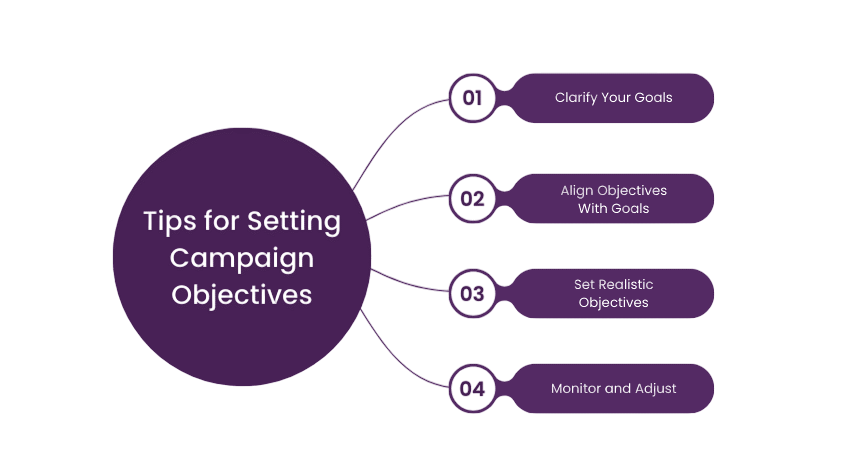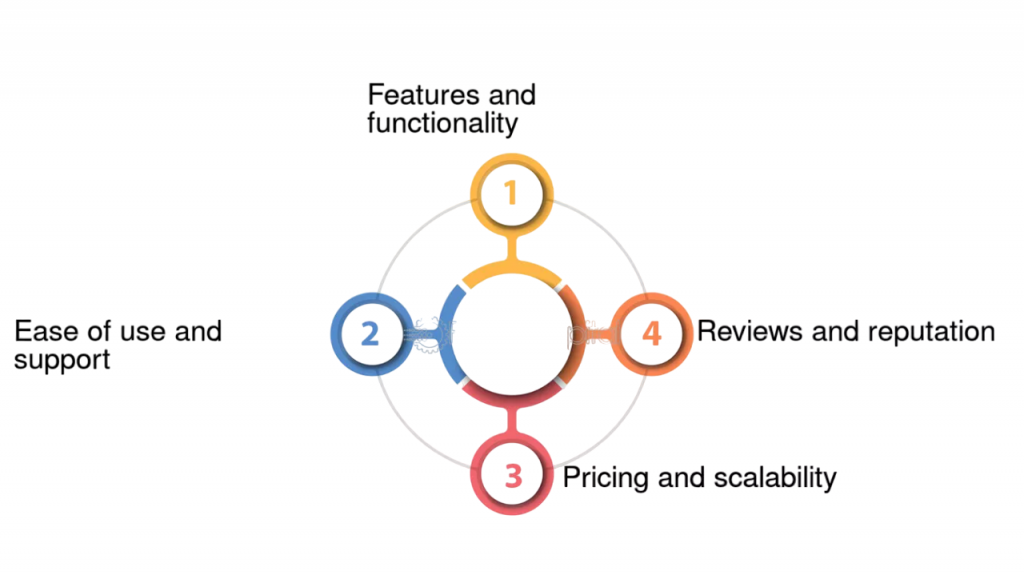
- Why Email Marketing Still Works
- Setting Campaign Objectives
- Building a Subscriber List
- Segmenting Your Audience
- Choosing the Right Email Platform
- Designing Compelling Emails
- Writing Engaging Copy
- A/B Testing Campaigns
- Conclusion
Why Email Marketing Still Works
Despite the rise of social media, influencer campaigns, and instant messaging apps, email marketing remains one of the most effective digital marketing strategies. With over 4 billion email users worldwide, businesses continue to rely on emails to communicate with their audience in a personal, direct, and measurable way. Email marketing offers a high return on investment (ROI) often averaging $36 for every $1 spent and is highly customizable for both B2B and B2C purposes. It enables businesses to nurture leads, drive sales, retain customers, Right Email Platform and build long-term brand relationships. Its success lies in its ability to reach users in a permission-based environment, often leading to higher engagement and trust.Despite the rise of social media, video content, and AI-driven campaigns, email marketing remains one of the most effective and reliable Digital Marketing Training channels. Its power lies in its directness: emails land straight in a user’s inbox, offering a personalized touch that other platforms often lack. With high ROI, measurable performance, and the ability to segment audiences and tailor content, email marketing continues to deliver results for businesses of all sizes. Unlike social media, where algorithms can limit visibility, email gives marketers full control over who sees their message and when. It’s also a vital tool for nurturing leads, promoting offers, and building long-term customer relationships. When done right with relevant content, clean design, and proper timing email marketing consistently outperforms many newer marketing tactics, proving that it’s far from outdated.
Ready to Get Certified in Digital Marketing? Explore the Program Now Digital Marketing Online Training Offered By ACTE Right Now!
Setting Campaign Objectives
Every successful email marketing strategy begins with clearly defined objectives. These goals help align content, design, and delivery mechanisms with business outcomes. Objectives may vary from one campaign to another such as increasing website traffic, generating leads, driving product sales, promoting a webinar, or nurturing existing subscribers. For instance, an e-commerce business might aim to recover abandoned carts, while a SaaS platform may focus on converting trial users to paid subscribers. Setting SMART (Specific, Measurable, Achievable, Relevant, Metric in Google Analytics and Time-bound) objectives helps marketers stay focused, assess campaign performance, and make informed adjustments over time.Setting clear campaign objectives is a crucial first step in any successful digital marketing effort.

Objectives define what you want to achieve and guide every aspect of your campaign from messaging and audience targeting to budget allocation and performance measurement. Well-defined goals help ensure that your marketing efforts are focused, strategic, and aligned with overall business priorities. Common objectives include increasing brand awareness, generating leads, driving website traffic, boosting sales, or improving customer retention. Each objective should follow the SMART framework Specific, Measurable, Achievable, Relevant, and Time-bound to ensure clarity and accountability. By setting the right objectives upfront, marketers can create more targeted campaigns, track progress effectively, and optimize performance over time for better results.
Building a Subscriber List
The cornerstone of email marketing is a strong and permission-based subscriber list. Quality always trumps quantity. Marketers must use ethical methods to collect emails, avoiding purchased lists which can damage sender reputation and violate data protection laws. Effective list-building strategies include offering lead magnets (like eBooks, free trials, discounts, or exclusive content) in exchange for email addresses. Website pop-ups, blog subscription forms, SEO Keyword Research and landing pages with gated content also encourage sign-ups. It’s essential to make the opt-in process transparent and double-confirm with a welcome email, ensuring recipients are genuinely interested in receiving your messages.Building a strong subscriber list is the foundation of any successful email marketing campaign. Your subscriber list represents a direct line of communication with people interested in your brand, products, or services. To grow this list effectively, focus on attracting quality subscribers who are genuinely engaged and likely to respond to your emails. Start by offering valuable incentives such as exclusive content, discounts, or free resources in exchange for email sign-ups. Make it easy for visitors to subscribe by placing clear and attractive sign-up forms on your website, blog, and social media channels. Additionally, segment your list based on interests, behavior, or demographics to deliver personalized content that resonates with each group. Remember, building a subscriber list is an ongoing process that requires nurturing trust, respecting privacy laws, and consistently providing value. Over time, a well-maintained subscriber list becomes one of your most powerful assets for driving engagement, conversions, and long-term customer loyalty.
Segmenting Your Audience
- Create High-Value Lead Magnets: Offer free resources like eBooks, checklists, SEO Tips To Rule Google Maps or webinars in exchange for email sign-ups.
- Use Clear and Compelling CTAs: Place call-to-action buttons strategically on your website, blog, and landing pages.
- Leverage Social Media Channels: Promote your newsletter or email list on platforms like Instagram, LinkedIn, and Facebook.
- Add Signup Forms Across Your Website: Include opt-in forms on the homepage, blog posts, footer, and exit-intent popups.
- Offer Discounts or Exclusive Deals: Encourage subscriptions by offering first-time discounts or early access to products.
- Run Contests or Giveaways: Use contests to grow your list quickly while also engaging your audience.
- Use Referral Incentives: Let current subscribers refer friends in exchange for rewards or exclusive content.
- Collect Emails at Events or Webinars: Use sign-up sheets or digital forms during online/offline events to grow your list.
- Ensure GDPR & CAN-SPAM Compliance: Always use opt-in methods and clearly state how you’ll use subscriber data.
- Ease of Use: Look for a platform with a user-friendly interface and drag-and-drop email builders.
- Automation Capabilities: Choose a tool that supports automated workflows like welcome emails, drip campaigns, and behavioral triggers.
- List Management Features: Ensure the platform offers segmentation, tagging, Digital Marketing Training and audience targeting tools.
- Templates and Design Options: Access to customizable, mobile-responsive templates saves time and improves email quality.
- Analytics and Reporting: Look for detailed performance tracking (open rates, click-through rates, conversions).
- Integration with Other Tools: Make sure it connects easily with your CRM, eCommerce platform, and other marketing tools.
- Scalability: Pick a platform that can grow with your business and handle larger volumes as your list expands.
- Deliverability Rates: Choose a provider known for strong deliverability and spam protection.
- Pricing Plans: Compare features across pricing tiers to ensure value for money at your current business stage.
- Customer Support: Good support (chat, email, phone) can be crucial, especially when setting up or troubleshooting.
- Start with a Strong Subject Line: Grab attention instantly with a subject that sparks curiosity or promises value.
- Use a Conversational Tone: Write like you’re speaking directly to the reader, friendly, clear, and personal.
- Focus on Benefits, Not Just Features: Show the reader how your offer solves their problem or improves their life.
- Keep It Clear and Concise: Get to the point quickly. Use short sentences and simple language.
- Personalize When Possible: Use the subscriber’s name, location, Video Marketing or past behavior to make the message feel tailored.
- Create a Sense of Urgency: Use time-sensitive language to encourage quick action (e.g., “limited-time offer”).
- Tell a Story or Use Relatable Examples: Storytelling builds connection and keeps readers engaged longer.
- Include a Clear Call-to-Action (CTA): Tell readers exactly what to do next click, buy, register, or reply.
- Use Visual Hierarchy: Highlight key points with bold text, bullet points, and headers to guide the reader.
- Test and Optimize: A/B test different copy styles, lengths, and CTAs to see what resonates best.
To Explore Digital Marketing in Depth, Check Out Our Comprehensive Digital Marketing Training To Gain Insights From Our Experts!
Choosing the Right Email Platform

Designing Compelling Emails
Email design plays a crucial role in the success of your campaign. Visually appealing and responsive designs enhance readability and user experience, especially since a majority of emails are now opened on mobile devices. Key elements of effective email design include a recognizable brand logo, a compelling header, an attention-grabbing call-to-action (CTA), and concise content. Use colors and typography that match your brand identity. Keep the layout clean, with enough white space to avoid clutter. Always preview how the email looks on different devices and test it for various email clients (like Gmail, Outlook, etc.) before sending.Designing compelling emails is essential for capturing attention, driving engagement, and achieving your campaign goals. A well-crafted email combines visually appealing design with clear, Types of Content Marketing concise messaging that resonates with your audience. Start with a strong subject line to encourage opens, followed by a clean layout that guides the reader’s eye through the content. Use a consistent brand style colors, fonts, and tone to build recognition and trust. Break up text with visuals, bullet points, and white space to make your email easy to scan. Always include a clear call-to-action (CTA) that tells the reader exactly what to do next, whether it’s visiting your website, downloading a resource, or making a purchase. Ensure mobile responsiveness and test your emails across devices to deliver a smooth experience. Ultimately, compelling email design is about making your message not just seen but acted upon.
Looking to Master Digital Marketing? Discover the Digital Marketing Expert Masters Program Training Course Available at ACTE Now!
Writing Engaging Copy
A/B Testing Campaigns
A/B Testing Campaigns (also known as split testing) allows you to optimize your email campaigns by testing different versions of a single element. You can A/B test subject lines, email designs, CTA buttons, send times, images, and content length to see which version performs better. For instance, you might send version A with the subject “Limited Time Offer!” and version B with “Your Exclusive Deal Awaits!” to different segments of your audience. The version that achieves higher opens or clicks informs your future strategy. Conduct tests one variable at a time for clearer insights. Email platforms often provide built-in A/B testing tools that automate the analysis and selection of the winning version.A/B testing, also known as split testing, is a critical technique in email marketing that helps you understand what works best for your audience. It involves sending two or more versions of an email to different segments of your list, with each version varying by just one element such as the subject line, Google’s Match Type Changes call-to-action (CTA), email design, or send time. By analyzing which version performs better, marketers can make data-driven decisions to optimize future campaigns. For example, you might test two subject lines to see which gets a higher open rate or try different CTAs to determine which drives more clicks. The key to effective A/B testing is isolating one variable at a time, so you know exactly what caused the change in performance. It’s also important to have a large enough sample size for results to be statistically meaningful. A/B testing helps improve engagement, increase conversions, and reduce guesswork in your email marketing strategy. Over time, even small improvements can lead to significant gains in ROI. Consistent testing and optimization allow you to better understand your audience’s preferences and behaviors, ensuring your emails stay relevant, effective, and impactful in a competitive inbox environment.
Preparing for Digital Marketing Job Interviews? Have a Look at Our Blog on Digital Marketing Interview Questions and Answers To Ace Your Interview!
Conclusion
Email marketing is far from obsolete in fact, it’s more important than ever in an era dominated by fleeting social trends and data overload. By developing a clear strategy, building a clean list, segmenting your audience, delivering value-driven content, and optimizing campaigns with testing and analytics, you can turn emails into a powerful marketing channel. Whether you’re a small business owner, a startup, or a Digital Marketing Training , mastering email marketing can unlock significant growth potential, customer loyalty, and sustained engagement. As technology evolves, integrating AI, predictive analytics, and advanced personalization will further refine how businesses use email to connect meaningfully with audiences across the globe.A well-executed digital marketing strategy is essential for businesses aiming to succeed in today’s competitive online landscape. By setting clear objectives, understanding your audience, and choosing the right channels and tools, you can create targeted campaigns that deliver measurable results. Whether it’s building a strong subscriber list, designing compelling emails, or continuously optimizing through A/B testing, every step plays a vital role in maximizing your marketing impact. Embracing these core principles not only boosts engagement and conversions but also helps build lasting customer relationships. Ultimately, a thoughtful and data-driven approach to digital marketing paves the way for sustained growth and long-term success.




